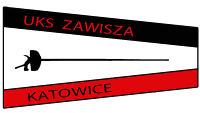However, prudent leverage choices that align with operations and business cycles can provide stability without over-levering the balance sheet. Companies with higher financial leverage take on more debt and interest expense. This causes larger swings in net income due to the fixed interest payments that must be made regardless of operating profitability. In essence, financial leverage relies more on funding sources while operating leverage depends on managing operations and costs efficiently.
Running a business incurs a lot of costs, and not all these costs are variable. In other words, there are some costs that have to be paid even if the company has no sales. These types of expenses are called fixed costs, and this is where Operating Leverage comes from.
How does leverage differ between industries with varying capital requirements?
Companies with high operating leverage see larger swings in operating profit with changes in sales volume. Financial leverage refers to the use of debt financing to increase the potential returns of an investment. A company that borrows money can invest and expand its operations to generate higher profits if the return from its investments is greater than the interest paid on the debt. However, debt financing also increases the financial risk if the investment fails to generate the expected higher returns.
- Investors can come up with a rough estimate of DOL by dividing the change in a company’s operating profit by the change in its sales revenue.
- Financial leverage and operating leverage are two important concepts in business finance that refer to how changes in revenue impact net income.
- Most of Microsoft’s costs are fixed, such as expenses for upfront development and marketing.
- This increases risk and typically creates a lack of flexibility that hurts the bottom line.
Fixed Costs and Their Impact on Operating Leverage
An example of combined leverage would be if a company’s sales increased by 10%, while the eps increased by 16.67%. The percentage change in sales amounts to 10% (from 2,000 units to 2,200 units), whereas the percentage change in EPS amounts to approximately 16.67% (1/6 x 100). Thus, every 1% change in the sales level results in a 1.67% change in EPS. Financial leverage arises when a firm decides to finance the majority of its assets by taking on debt.
Breaking Down the Financial Leverage Ratio Formula
A business with operating leverage witnesses drastic changes in profitability when not much appears to change in sales. This leverage thus comes very handy while considering companies with a fixed-cost-heavy structure because it elucidates the depth of profit augmented by added sales after fixed costs are met. The difference between financial and operating leverage is that the particular costs each leverages to measure impacts and their effect on the profitability of a firm. In simple terms, financial leverage deals with debts and interest while operating leverage deals with the fixed operation costs. These two measurements of leverage bring out in what way a firm would manage its cost, deploy its assets, and more generally structure its finances. Operating leverage is the result of different combinations of fixed costs and variable costs.
As you can see there is a heavy focus on financial modeling, finance, Excel, business valuation, budgeting/forecasting, PowerPoint presentations, accounting and business strategy. Although Jim difference between operating leverage and financial leverage makes a higher profit, Bob sees a much higher return on investment because he made $27,500 profit with an investment of only $50,000 (while Jim made $50,000 profit with a $500,000 investment). Regular stress testing across multiple scenarios aids more balanced leverage decisions aligned to corporate strategy. Discover the top 5 best practices for successful accounting talent offshoring.
Key Points:
In contrast, financial leverage focuses more on the potential upsides and downsides of using debt financing for business expansion and investments. Financial leverage looks at how using debt financing impacts net income growth and losses. More debt in the capital structure results in higher interest expenses, which raises the breakeven point for profitability. Yes, a company can have both high financial and operating leverage, which would increase both financial and operational risks. Such a company would have higher debt and fixed operational costs, making it highly sensitive to sales changes and economic fluctuations.
Operating leverage refers to the use of fixed costs in a company’s cost structure. Companies with higher operating leverage have a higher proportion of fixed costs relative to variable costs. This leads to larger swings in earnings before interest and taxes (EBIT) when there are changes in sales volume.
